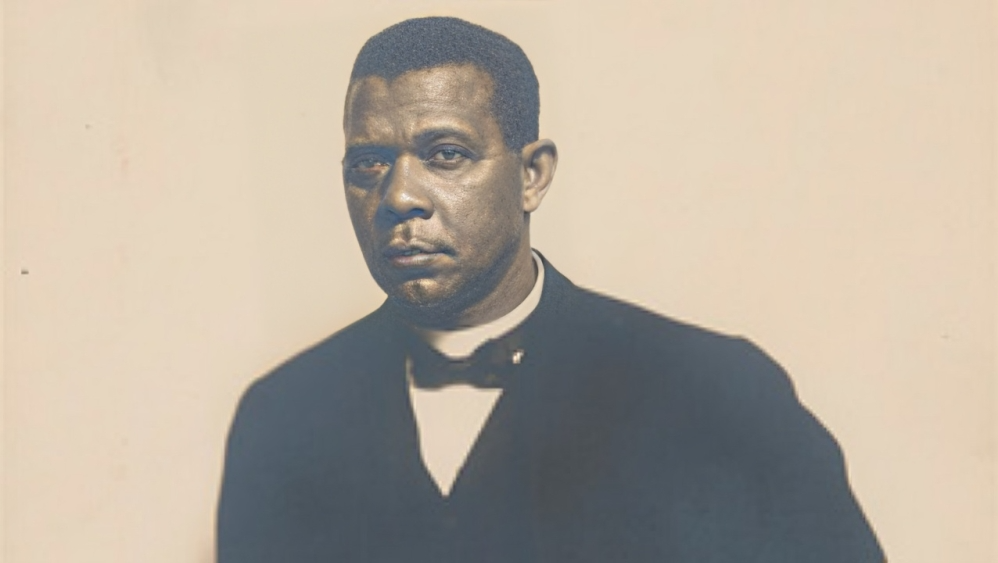
Born a slave in Virginia, Booker T. Washington (1856–1915) became one of the most popular and influential black leaders in the United States between 1895 and his death in 1915. Washington founded Tuskegee Normal and Industrial Institute in 1881 and built it into one of the nation’s best-known colleges. In 1900, he organized the National Negro Business League to foster black entrepreneurship. With an extensive network of supporters, Washington influenced black federal appointments, funds for black colleges, and the editorial policies of several newspapers.
In his speech before an integrated audience at the Cotton States and International Exposition in Atlanta, Georgia, in September 1895, Washington proposed a compromise in which African Americans would minimize agitation for political rights in exchange for vocational training and participation in the economic development of the New South. While his proposals won him considerable national support from the black community and from white industrialists, politicians, and philanthropists, it did little to improve the political condition of African Americans. Few knew that Washington secretly financed challenges to Jim Crow laws. Washington’s accommodationist policies led to the education of many and the establishment of many schools but violence and discrimination against blacks increased. By the twentieth century, a resurgence of violence led to a sharp increase of lynchings as well as race riots in Wilmington, North Carolina (1898); Atlanta, Georgia (1906); and Springfield, Illinois (1908).
C. M. Battey was a prominent photographer known for his work in the late 19th and early 20th centuries. The photograph you’re referring to, of Booker T. Washington around 1890, is one of the notable images taken by Battey.
Booker T. Washington was a significant African American educator, author, and leader who founded the Tuskegee Institute in Alabama. His work and influence in the late 19th and early 20th centuries made him a prominent figure in American history, particularly in the context of education and racial uplift.
The photograph by C. M. Battey captures Washington at a time when he was emerging as a leading voice in African American education and social reform. Washington’s appearance in the photo—likely featuring him in formal attire—reflects his status as an influential public figure. Battey’s portraits of Washington are valued for their historical significance, providing a visual record of Washington’s public life and the era in which he was active.